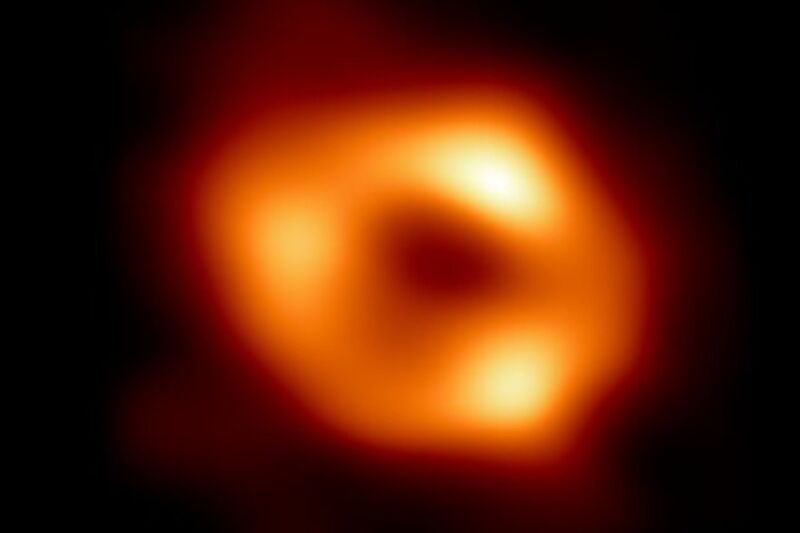Feast your eyes on the first image of the black hole at the center of our Milky Way
Ars Technica » Scientific Method 2022-05-12

Enlarge / This is the first image of Sgr A*, the supermassive black hole at the center of our galaxy. It’s the first direct visual evidence of the presence of this black hole. It was captured by the Event Horizon Telescope (EHT). (credit: EHT Collaboration)
At the heart of our Milky Way galaxy lurks a supermassive black hole, more than four million times the mass of our Sun. Scientists with the international Event Horizon Telescope (EHT) collaboration have now produced the very first image of that supermassive black hole. The collaboration made the announcement during a live-streamed press conference this morning from the European Southern Observatory's headquarters in Munich, Germany, as well as numerous other simultaneous press conferences around the world. Six papers about the research have been published in The Astronomical Journal Letters.
In 1933, physicist Karl Jansky noticed a radio signal coming from somewhere in the constellation Sagittarius, near the center of our Milky Way galaxy, which he dubbed Sagittarius A. Later research revealed that the source actually had several overlapping components, one of which (identified in 1974) was particularly bright and compact. It was named Sagittarius A* (pronounced A-star). It's so named because (per co-discoverer Robert Brown) the radio source was "exciting" and in physics, the excited states of atoms are denoted with an asterisk. Physicists have been convinced since the 1980s that the central component of Sagittarius A*—and the source of all those radio emissions—was likely a supermassive black hole, similar to those thought to be at the center of most spiral and elliptical galaxies.
The only way to "see" a black hole is to image the shadow created by light as it bends in response to the object's powerful gravitational field. As Ars' John Timmer reported back in 2019, the EHT isn't a telescope in the traditional sense. Instead, it's a collection of telescopes scattered around the globe. The EHT is created by interferometry, which uses light in the microwave regime of the electromagnetic spectrum, captured at different locations. These recorded images are combined and processed to build an image with a resolution similar to that of a telescope the size of the most distant locations. Interferometry has been used for facilities like ALMA (the Atacama Large Millimeter/submillimeter Array), where telescopes can be spread across 16 km of desert.